

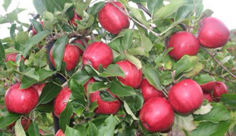 The Gala Club over the last 25 years has been instrumental in developing growing & storage practices, Gala clone advancement and public awareness, all of which has taken the variety from a minor one back in the 1990's to the 'number one apple' grown by British growers today.
The Gala Club over the last 25 years has been instrumental in developing growing & storage practices, Gala clone advancement and public awareness, all of which has taken the variety from a minor one back in the 1990's to the 'number one apple' grown by British growers today.
In 2019 the Gala Club committee decided the formality of a Gala Club and annual pre-harvest meeting was no longer required. However elements of pre-harvest technical advice would now be undertaken by EKFS with the Gala Club integrated into the East Kent Fruit Society.
As Gala harvest approaches, forecasting optimum harvest dates is becoming more refined.
Below: Mark Tulley
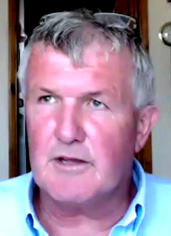 The tried and tested process monitors starch levels, fruit firmness and brix (sugars) but Mark Tulley and his team at Landseer have been trialling Chlorophyll degradation as an early indicator of harvest date.
The tried and tested process monitors starch levels, fruit firmness and brix (sugars) but Mark Tulley and his team at Landseer have been trialling Chlorophyll degradation as an early indicator of harvest date.
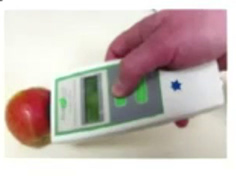 Landseer have been developing this process since 2012. Monitoring the chlorophyll degradation by measuring the fluorescence, Mark and his team have developed a hand held tool for measuring the fluorescence level indicating the degradation.
Landseer have been developing this process since 2012. Monitoring the chlorophyll degradation by measuring the fluorescence, Mark and his team have developed a hand held tool for measuring the fluorescence level indicating the degradation.
The benefit of using chlorophyll degradation over the current system is a circa 7 day forewarning of the optimum harvest date. Current science using starch reduction as the prime indicator is accurate but does not give growers 'an early warning'
The forecasting process used for many years has depended on starch reduction, brix and fruit firmness and though reliable, depends on destructive assessment of fruit as starch and fruit firmness and brix levels are monitored over the weeks leading up to harvest. Harvest for long term storage needs to be complete before the starch level drops below 80%!
Below a message from Nigel Jenner - Chief Technical Officer at APL
"A limited number of Gala samples were tested this week. Fortunately, there is no movement in this variety yet. We are expecting somewhere around 4th -5th September (two weeks away) to be the date at which picking should begin, but this will be confirmed in future newsletters".
Today the science of Chlorophyll fluorescence markers offers an earlier indication of the optimum harvest date.
Moving onto predicting harvest dates: Mark Tulley said we (Landseer) will be doing the chlorophyll fluorescence tests and this will give a 7 day warning of when starch levels drop to 80% in apples.
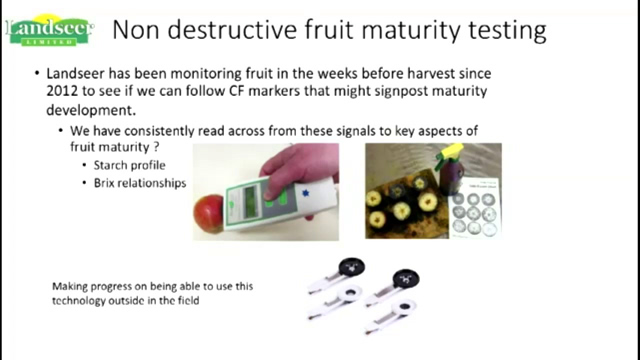
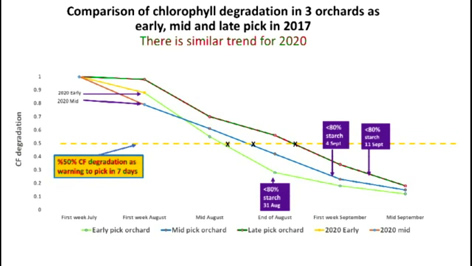
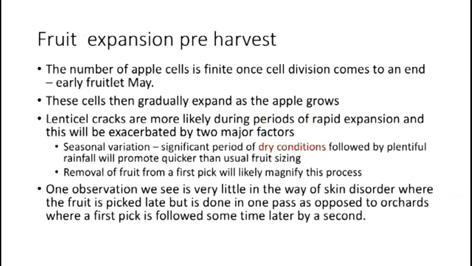
The lenticels help in allowing the oxygen into and carbon dioxide out of the apple. The lenticels also help in transpiration called as the lenticular transpiration. (v) Lenticels are active during the night when stomatal transpiration stops.
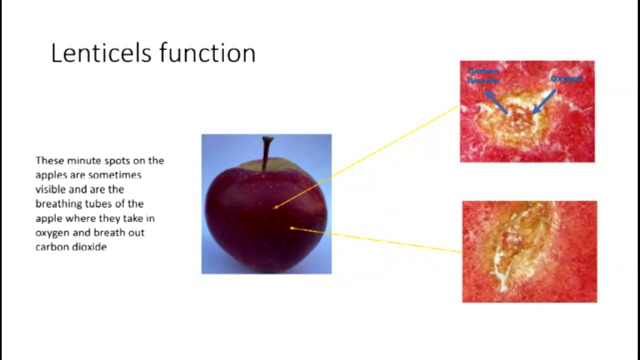
Historically Gala has been problem free in terms of internal breakdown (unlike other varieties, bitter pit has been absent) and skin necrosis issues, but in recent years internal browning appeared in late stored (larger) Gala and lenticel damage with necrosis. Colin Carter, Mark's colleague at Landseer noted that our favourable 'maritime climate' has seen periods of extreme heat which is indicative of 'climate change influence' - 'changing the status quo!
Below: left; lenticel breakdown and right; hot summer factors
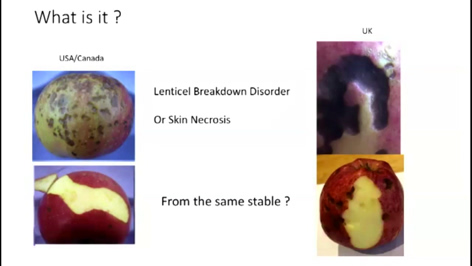
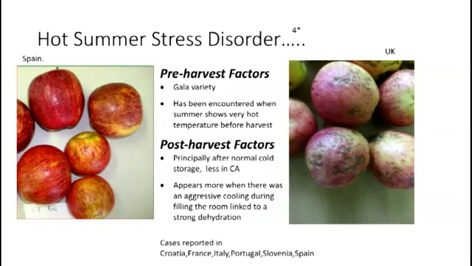
Below: left; Stem end browning damage in 2017 crop and right; Mitigating internal breakdown
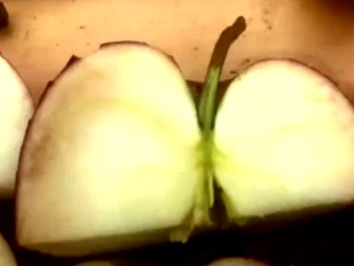
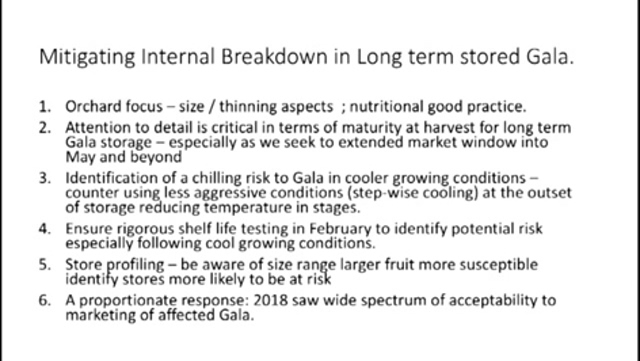
The English Apple Man comments
1. Good orchard management is a basic requirement.
2. Critical to meet all maturity parameters at harvest for long term storage success.
3. In cooler growing conditions 'chilling risk' can be reduced by step chilling: "taking storage temperature down to target regime (1 C) in steps, reduce to 10 C - hold for a period before taking temperature down to target temperature. Also keep C02 low in initial pulldown, before operating target regime.
4. Vigilant 'shelf life' testing in February to identify possible chilling damage after a cool growing summer.
5. Know what the size profile in different stores is: larger fruit more at risk of internal damage.
6. A proportionate response - low levels of damage not commercially significant.
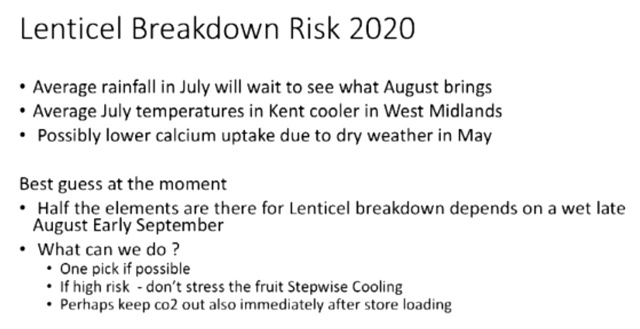
Mark Tulley stressed the benefit of a 'one pick' strategy (not always possible) reducing the probability of internal and lenticel issues arising as Gala left for a second pick are more prone to internal and lenticel issues, particularly when wet weather arrives in late August/early September causing the second pick Gala to increase in size disproportionately between first and second picks!
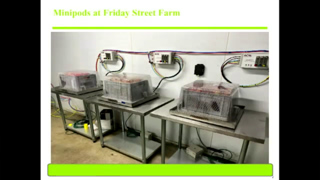 That is all for this week, but next week The English Apple Man will report on Nigel Jenner's Gala storage trials with Mini Pods.
That is all for this week, but next week The English Apple Man will report on Nigel Jenner's Gala storage trials with Mini Pods.
Take care
The English Apple Man